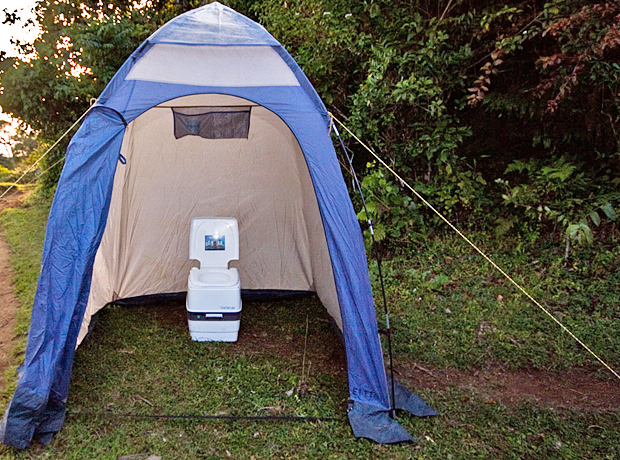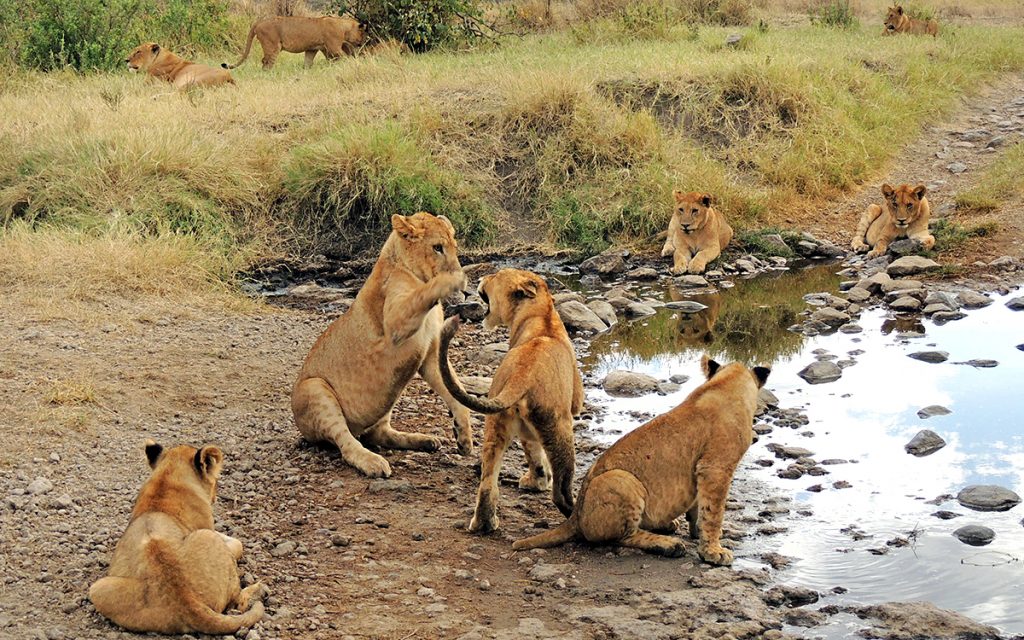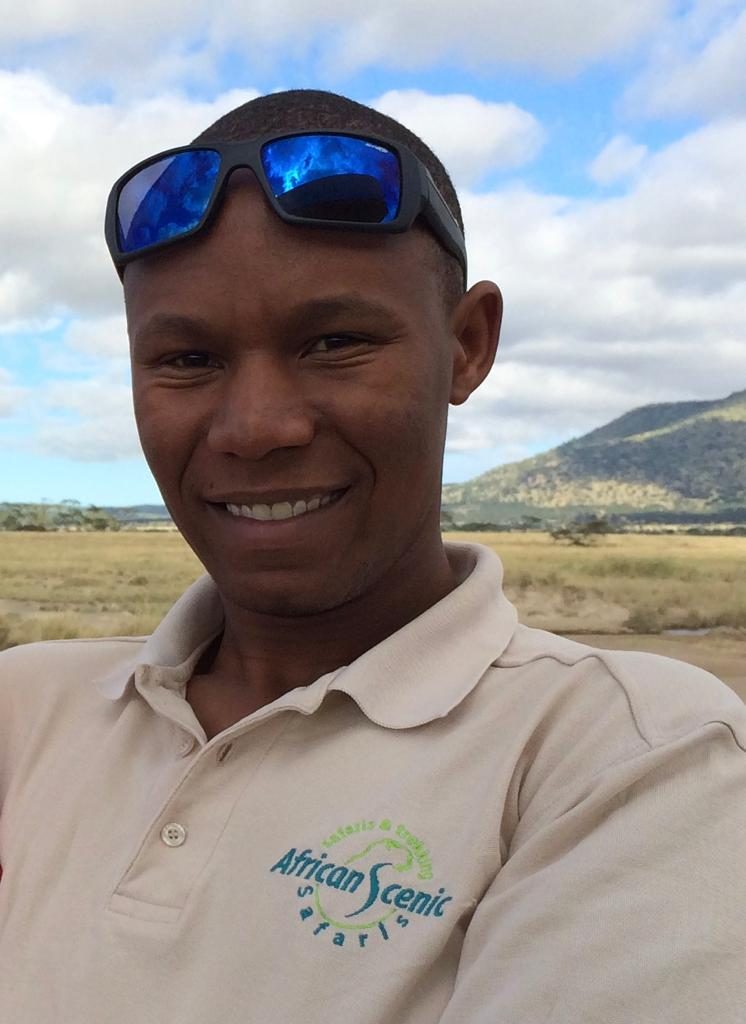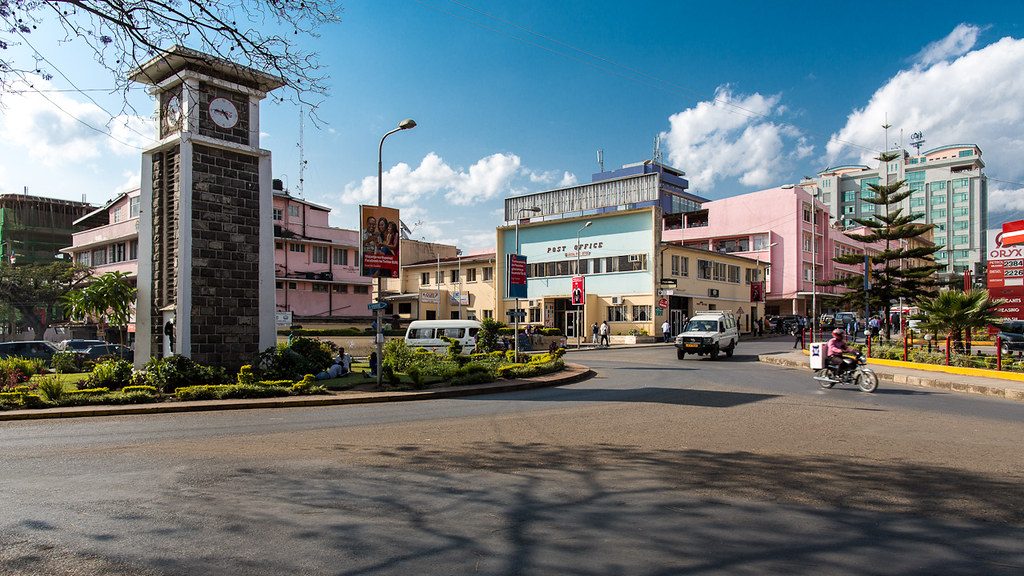Think you can’t climb Mount Kilimanjaro? Think again.
The Ultimate Guide to Climbing Mount Kilimanjaro

Standing at 19,336 feet (5,895 meters), Mount Kilimanjaro is the highest peak in Africa, the largest free-standing mountain in the world, and one of the world’s Seven Summits.
The mountain, part of Tanzania’s Kilimanjaro National Park, displays an astounding variety of environments. At lower altitudes, the mountain forest provides a home for elephants, buffalo and primates. Climb higher and the forest is overtaken by moorland. Higher still, is the alpine desert. Finally, the ascent takes you to the summit, where you stand, on the roof of Africa.

And with the mountain’s ice cap shrinking and predicted to vanish in 15 years, there is no better time than now, to climb Mount Kilimanjaro! Mount Kilimanjaro is one of the world’s only summits of similar height that can be accessed by a wide range of hikers of different fitness levels and abilities. So don’t sell yourself short. Think you can’t climb Mount Kilimanjaro? Think again!
Think you can’t climb Mount Kilimanjaro? Think again!
Permits
To climb Mount Kilimanjaro, you must book a trip through a registered guiding company.
Best Time to Visit
There are two seasons for climbing Mount Kilimanjaro: summer and winter. Temperatures on the mountain do not change from season to season, hence providing flexibility to climb in either season. The rainy season is from March through May. It is not a good time to climb the mountain.

- June to October: June to October is the most popular, as the climate is dry. This is also when the mountain is most busy. If you plan to go on safari after your climb, June and July are great for viewing the Big Cats. August through October is peak season to experience the Great Wildebeest Migration. About two million animals thunder across the Mara river in northern Serengeti National Park, and into Kenya, a spectacle that must not be missed.
- December to March: Winter is a great time to visit because the mountain is generally less busy. If you’re planning to go on a safari after your climb, this is a great time to watch millions of wildebeest giving birth on the plains of the Serengeti.
Routes
You can take one of seven routes up to the summit of Mount Kilimanjaro. The routes differ in terms of scenery, number of days, traffic and difficulty. None of the routes require technical climbing, but they all require you to be in good shape.

Sample Itinerary

Training for the Climb
Aerobic fitness improves the function of the heart, lungs and muscles, which will help your body handle the physical strain of the climb. You should be able to exercise for at least an hour four to five times a week. Aerobic fitness classes, power walking, running, cycling on hills, swimming and cross-country skiing all count towards being aerobically fit.
Endurance is also important as you will be hiking for five to eight days consecutively, depending on the route you take. Therefore train by walking or running long distances on consecutive days, as many as possible. Work yourself up to full day and even multiple consecutive days of hiking. And if you’re able to hike at higher altitudes, it is even better.
Break in your hiking boots and carry a 10 pound day pack while exercising. Strengthening your muscles and building up your stamina will help your body deal with Mount Kilimanjaro’s altitude. But, taper off your training in the last two weeks before your climb, to rest your body and shore up its strength and stamina for the real climb.
Vaccines
The Centers for Disease Control in the USA and the World Health Organization recommend the following vaccinations:
- Hepatitis A
- Hepatitis B
- Typhoid
- Yellow Fever
- Rabies
- Chickenpox
- Shingles
- Influenza
- Meningitis
- Polio
- Measles, mumps and rubella (MMR)
- Tdap (tetanus, diphtheria and pertussis)
- Pneumonia
It is critical to take an International Health Card which lists your vaccines, for entry into Tanzania.
Packing List

Registered guiding companies generally provide porters, meals and gear such as tents, sleeping pads, cooking utensils and treated drinking water. You can also request portable toilets and portable showers. For portable hand wash stations, check with your guiding company, as they may be included in the cost of the climb. You are therefore only required to pack your personal belongings such as toiletries and clothes.
With respect to clothes, it is critical to layer up as temperatures vary from 70 degrees fahrenheit to 90 degrees fahrenheit at the base of the mountain to -15 degrees fahrenheit to 0 degrees fahrenheit at the summit. Fabrics for every layer should support the wicking process, allowing moisture to pass through to the next layer, instead of absorbing it. Therefore cotton should be avoided, as it absorbs moisture.
Most guiding companies allow you to carry two pieces of luggage: a large duffel bag carried by porters and a day pack which you are responsible for carrying. Outside of your daily toiletries, your packing list should include the following:
- Sunscreen (SPF 30 or higher)
- Lip balm (SPF 30 or higher)
- Aloe cream
- Personal wipes
- Insect repellent
- Personal first-aid kit
- Antibacterial hand sanitizer
- Water purification tablets
- Water bottles or hydration bladders (4 liters)
- Blister plasters
- Hat with adjustable neck cover
- Thermal beanie or head band
- Sunglasses – for when you are on the snow and ice
- LED headlamp with extra batteries
- Hiking boots that are waterproof, durable, breathable, lightweight, have traction, and are comfortable.
- Trekking poles
- Heavy-duty duffel bag without wheels or rigid handles (as this will be carried by porters)
- Quick dry layers of clothing, which you can re-wear
- Waterproof and warm gloves
- Waterproof and warm jackets and pants
- Warm socks
- Hand and toe warmers
- Energy bars and snacks
- Pee bottle
- Panty liners for women
- Sleeping bag
- Thermal sleeping pad
- Rain covers for your duffel bag and day pack or dry bags
- Toilet paper
- Biodegradable hygiene bags for soiled toilet paper
- Small binoculars
Non-biodegradable single-use plastic (e.g. plastic bag), is banned in Tanzania. Surrender it at the airport. Anyone found with it, can be fined on the spot.
Bathing and Toileting on the Mountain
Bathing: There are three options: (1) Rent a portable shower, (2) Wipe yourself down with wet wipes or (3) Take a sponge bath. Most guiding companies provide hot water in bowls.
Toileting: There are three options: (1) A few routes such as the Machame route offer outhouses. These outhouses require you to squat as they don’t have seats. However, they can be dirty. (2) You can also pay for a portable toilet, as shown above. (3) You can go in the bushes. You will have to carry your own toilet paper and wet wipes. Biodegradable hygiene bags are a must for your soiled toilet paper and wet wipes. You will have to carry these to dispose them off at the next camp, in alignment with “Leave no trace” rules. Further, there are no sinks with soap or running water, so you will have to use anti-bacterial gel.
At campsites, bowls with warm water and soap are generally provided at no additional cost. A few guiding companies also include hand wash stations at no extra charge. Portable toilets and showers generally come with an additional fee.
Acute Mountain Sickness
As elevation increases, there is less oxygen available per breath. Acute Mountain Sickness (AMS), also known as altitude sickness or altitude illness, and its severe variants, High Altitude Cerebral Edema (HACE) and High Altitude Pulmonary Edema (HAPE), occurs when your body is not able to handle the low oxygen in the air.
Going too high too fast, is the key cause of AMS. Other contributing factors are dehydration and over exertion, in addition to personal factors such as fitness, age and gender.
It is critical to stay aware of how your body is handling the elevation, to communicate this to the mountain guides, and to rest and stay at the same elevation until the symptoms of AMS dissipate. An acclimatization day where you climb high and sleep low helps your body adapt to the elevation. If it does not, you must climb down immediately to a lower elevation where you don’t experience the symptoms.
Normal symptoms include breathing deeply and fast.
- Mild Symptoms include fatigue, headaches, nausea, dizziness, shortness of breath, disturbed sleep, and loss of appetite.
- Moderate Symptoms include a very bad headache that is not relieved with medication, feeling very nauseous which often results in vomiting, high fatigue and weakness, decreased coordination (also known as ataxia) and shortness of breath. People often underestimate moderate symptoms as they are generally able to walk. However, this is dangerous. Ascending with moderate symptoms almost certainly results in worsening of the symptoms to where a person is unable to walk. This can lead to death if evacuation to a lower altitude is not available. After descent and when your symptoms disappear, you can climb higher again.
- Severe Symptoms include extreme fatigue and weakness, inability to walk, shortness of breath while resting, tight chest, feeling of suffocation particularly while sleeping, mental confusion, hallucination and irrational behavior, coughing that brings up a white and frothy fluid and fluid build-up in the lungs. Ascent when experiencing severe symptoms causes HACE and HAPE and can result in death. To make matters worse, HACE tends to set in at night. Therefore it is critical to stay aware of your symptoms and to communicate them to the mountain guides. Rapid descent is the only remedy. Once a person has reached a lower elevation, medical support should be sought immediately.
Reliable guiding companies monitor your health by watching your symptoms and using readings from an oximeter and measuring your pulse. However, it is up to you to stay aware of your symptoms and communicate these to the guides.
You can help yourself by taking an extra day on the mountain to acclimatize, walking slowly without over-exerting, drinking 2.5 liters to 4 liters of water each day, and avoiding stimulants such as alcohol, caffeine and cigarettes. Using breathing techniques like “Pressure Breathing” and “Rest Step” also helps. Pressure breathing in essence involves taking deep breaths. By pursing your lips and exhaling with force, you let the carbon dioxide in your lungs escape and allow the thinner oxygen air to enter. “Rest Step” allows your skeleton to take on your weight rather than your muscles.
A few companies recommend personal oxygen tanks. However, these tanks are not helpful, as the oxygen flow is very low. Reliable guiding companies will carry emergency oxygen to help you make a descent to relieve symptoms of AMS.
Acetazolamide or Diamox is a prescription drug that can help mitigate AMS. It should be taken in advance of your ascent and under a doctor’s guidance. Once AMS sets in, immediate descent is the only remedy. And your mountain guides will help you with this.
Other Top 5 Things to Do in Tanzania

- See Africa’s Big Five (lions, leopards, elephants, buffalo and rhinoceros) up close and personal on Game Drives in Serengeti National Park, Ngorongoro Conservation Area, Lake Manyara National Park and Tarangire National Park.
- Watch the Great Wildebeest Migration of 2 million thundering animals across Serengeti National Park and Kenya.
- See Lake Natron for its Pink Flamingos.
- Go on a balloon ride for a birds-eye view of the African savanna as far as the eye can see.
- Relax on Zanzibar Island, well-known for its tantalizing beaches, UNESCO-listed Stone Town, swimming with dolphins and for its rare red Colobus monkeys.
Registered Guiding Companies

As mentioned previously, to climb Mount Kilimanjaro, by law, you must hire a registered guiding company. This registered guiding company generally provides porters, meals and gear such as tents, sleeping pads, cooking gear and treated drinking water. The guiding fee also typically includes the fees and permits to enter Kilimanjaro National Park. Reputable guiding companies will ensure you make a safe and as comfortable as possible descend up the mountain.
African Scenic Safaris enjoys a 96 percent success rate, taking people up to the summit of Mount Kilimanjaro. This is because the guides are very experienced at setting a slow and steady pace, which helps prevent altitude sickness and fatigue, and increases the chance of making it to the top. Each of the seasoned guides has 10-years of experience and each head guide also receives Wilderness First Responder Medical Training. The guides are also fluent English speakers. Gear and equipment is of the highest quality.
African Scenic Safaris is a member of the African Travel and Tourism Association, Tanzanian Association of Tour Operators, the Kilimanjaro Porters Assistance Project (KPAP) ensuring fair treatment of its staff and ensuring sustainable travel, and International Mountain Explorers Connection.
African Scenic Safaris also offers volunteering opportunities at Path to Africa.
Simbo Natai, Founder of African Scenic Safaris, and his team, create personalized itineraries based on fitness level, number of days you have and how you want to experience the mountain. They also offer jeep safaris to Tanzania’s iconic wildlife parks. They are available 24×7 ensuring you have a wonderful trip.
Travel Insurance
Along with your international travel insurance, African Scenic Safaris offers additional options to ensure you are more fully covered.
For an additional fee, evacuation insurance by helicopter is also available, especially important when experiencing AMS.
Consult with Simbo Natai and his team on which insurance you should purchase before your trip to Tanzania. Their experience will help you purchase insurance that works.
Airport

Arrive into Kilimanjaro International Airport located in the town of Arusha, Tanzania. Arusha is the gateway to Kilimanjaro National Park, all the other national wildlife parks of Tanzania, as well as Lake Natron.
Visas
If you are a non-Tanzanian citizen, check if you require a visa to visit Tanzania. It is easy and best to purchase this in advance and online.